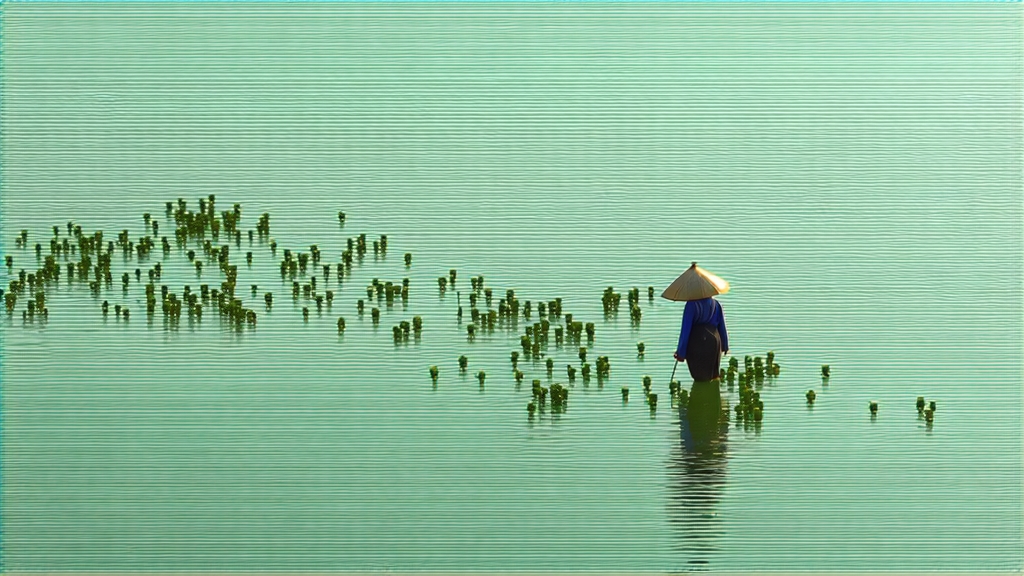
Biluochun, whose name literally means “Green Snail Spring,” is one of China’s ten most celebrated teas, yet it remains a quiet miracle even inside the country. Produced only in a narrow ring of hills and islands where Jiangsu Province meets the vast freshwater mirror of Taihu Lake, this tea carries the scent of apricot blossoms, river reeds and the lake’s own cool mist. To international drinkers accustomed to the broad, flat leaves of Longjing or the needle elegance of Huangshan Maofeng, Biluochun presents itself as thousands of tiny spirals, each no larger than a honeybee, cloaked in a downy white bloom that looks like frost on a spring lawn. One gram contains more than sixty individual buds, making it the densest, most labor-intensive green tea on earth.
History
The first written record appears in the Tang Dynasty’s “Classic of Tea,” but the tea gained imperial fame during the late Ming when the Kangxi Emperor visited Taihu on a southern inspection tour. Legend says that court servants brewed a cup of unnamed local tea whose fragrance reminded the emperor of the sound of spring birds. He christened it “Biluochun,” combining the spiral shape of a snail (luo) with the season of harvest (chun). From that moment the tea became tribute, carried north by canal boat and presented in sealed bamboo tubes lined with orange peel to preserve its perfume. European merchants first encountered it in 1843 when the clipper “Nemesis” docked at Canton; samples reached the London auction rooms labeled “Taihu Pi Lo Chun,” where it fetched twice the price of Keemun black tea.
Micro-terroir
Authentic Biluochun comes from only two tiny appellations: Dongting Mountain East and Dongting Mountain West, two basaltic islands inside Taihu Lake. The lake’s 48 000 hectares of water act as a thermal regulator, delaying spring warmth and creating nightly fogs that filter sunlight into a soft, diffused glow. Soils are a thin layer of acidic loam over weathered tuff rich in iron and magnesium; drainage is rapid, forcing roots to struggle and concentrate amino acids. Around every tea garden grow peach, plum and loquat trees; their simultaneous flowering in late March imparts a fruity lift that chemists identify as high levels of geraniol and linalool. Any tea grown outside this 17 km² zone may share the cultivar but will lack the lake-born sweetness that connoisseurs call “shui yun,” or water rhyme.
Cultivars
The original landrace is a small-leaf variety known locally as “Xiao Ye Wu Cha,” literally “tiny leaf dark tea,” even though it is green. In the 1980s researchers released clone line 139, prized for frost resistance and higher catechin content, but purists still prefer old-tree material whose leaves are barely 1 cm long. Aromatic cultivars such as Fuding Dabaicha have been experimentally grafted onto the mountain, yet the Tea Research Institute of Nanjing Agricultural University has shown that only the indigenous strain produces the signature combination of low bitterness and high floral volatile compounds.
Plucking
Harvest begins when the lake’s surface temperature holds steady at 12 °C for three consecutive days, usually between 15 and 25 March. Pickers work only between 5 a.m. and 9 a.m., before the sun burns off the mist. The standard is one unopened bud plus the adjacent leaf still folded like a paper fan—what locals call “qiao tou,” the sparrow’s tongue. A skilled picker gathers just 300 g of fresh leaf in four hours; 6.5 kg of this is required to yield 1 kg of finished tea, meaning a single kilo represents more than 9 000 hand selections.
Crafting
Within fifteen minutes of plucking the leaf is spread on bamboo trays set under shade cloth to lower the field heat to 25 °C. The first and most spectacular step is “shaqing,” killing the green, performed not in a rotating drum but on a cast-iron wok heated to 180 °C. The tea master tosses the gossamer buds into the wok with a motion like scattering confetti, then immediately presses them against the metal using only the heel of his palm. The contact lasts 3–4 seconds; any longer and the down will scorch, any shorter and enzymatic activity will linger. This is repeated eight times over six minutes, reducing moisture